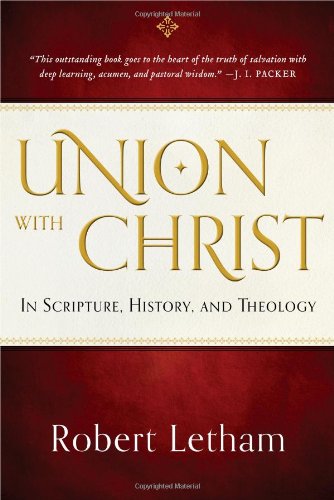A Brief Book Summary from Books At a Glance
By Steve West
Introduction
In this book, Letham explores the crucial topic of union with Christ. His work is informed both theologically and historically. Letham explains what union with Christ is, and also what it is not. He shows how every blessing of salvation flows out of this union. We were created to be united to the incarnate Son of God. This books leads into profound theological analysis, and through theology Letham points the reader to doxology.
Table of Contents
Introduction
Chapter 1 Creation
Chapter 2 Incarnation
Chapter 3 Pentecost
Chapter 4 Union with Christ and Representation
Chapter 5 Union with Christ and Transformation
Chapter 6 Union with Christ in Death and Resurrection
Summary
Chapter 1: Creation
Union with Christ is possible because God created human beings to be compatible with himself. God created the world without an intermediary, and then he formed it, shaping it into inhabitable domains for the creatures that he fashioned. The apex of creation occurs when God makes his image bearers as special partners. God brings order, creating a great variety of things, but all bound together in the unity of his design. Although the original readers would not have discerned the full significance of the Trinitarian hints in Genesis 1, in subsequent revelation when the plurality in the Godhead was more fully revealed, the hints in Genesis 1 were clarified and their significance could be grasped. The NT reveals that Christ is the creator, and that he is creation’s head. Christ is sustaining all things and guiding them towards the completion of his purposes. Adam and Eve were created in the image of God, but Christ is the identical image of God. Adam was created in Christ and fell out of this state, but in Christ believers are being renewed in this image. There are innumerable important differences between God and human beings, but God created us to be compatible with himself. Adam experienced close communication and fellowship with God. He was given responsibility by God as a covenant partner. Adam sinned, but the second Adam, Jesus Christ, succeeded and reigns over all things. We can have union with Christ because of the way that God created us, and because of God’s plans for creation and humanity.
Chapter 2: Incarnation
It cannot be denied that the NT witness is that Jesus is the Son of God. Jesus defends his claims of deity and is identified with God. He is also a genuine human being. God must save, but a human being must pay for human sin. We can experience union with Christ because Christ first united his divine nature to a human one. He remained fully God, but added a genuine human nature, which he preserved without sinning. In the light of the challenge of Nestorianism, the early church affirmed that the Word assumed a full human nature, so that there was one person who had two natures (deity and humanity). Eutychus taught a view of Christ that basically blended the two natures and subsumed Christ’s humanity into his deity. The Definition of Chalcedon rejected the view that Christ was two persons, and the view that the union fused the natures. It asserted that Christ had two natures, without mingling or changing them. The Definition did not explain the hypostatic union, so it was considered insufficient by many. The Emperor Justinian I distinguished between. . .
[To continue reading this summary, please see below....]The remainder of this article is premium content. Become a member to continue reading.
Already have an account? Sign In
